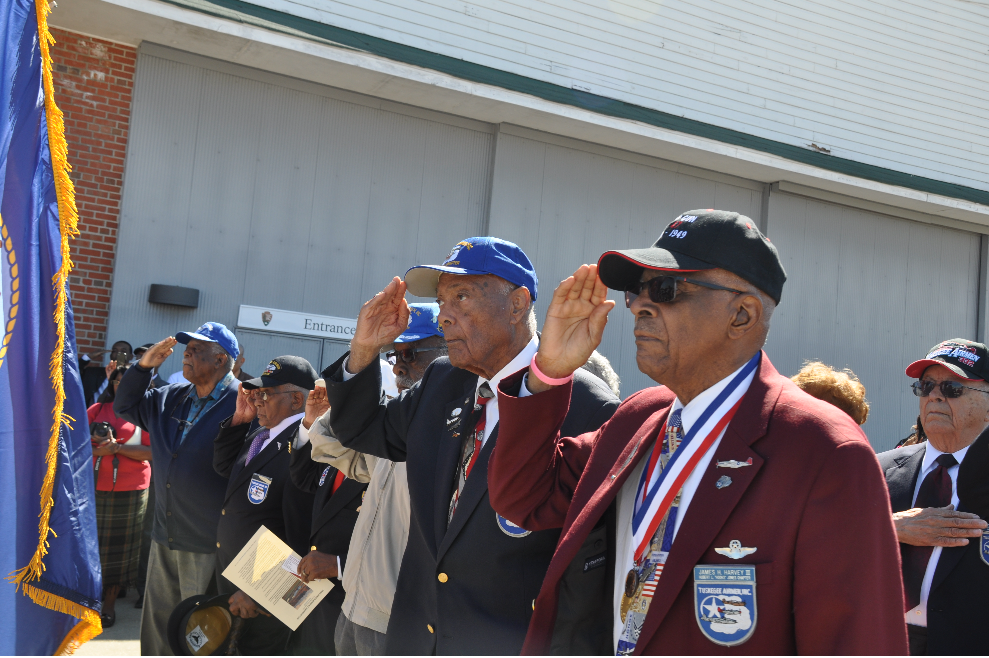
On Tuesday, dozens gathered for a reception and gala dinner at Montgomery’s Renaissance Hotel downtown to celebrate the 75th anniversary of the Tuskegee Airmen Experience.
Of the 16,000 men and women considered original Tuskegee Airmen there are fewer than 1,000 still alive.
The reception and gala commemorated the activation of the U.S. Army Air Corps 99th Pursuit Squadron at Chanute Field on March 22, 1941 which began the legacy of The Tuskegee Airmen, the nickname of the first African-American unit to fly combat airplanes in World War II.
Tuesday’s event honored the pilots and support personnel trained at Tuskegee Army Air Field.
The Airmen were named after the Tuskegee Army Airfield near Tuskegee, Alabama, where they received their pilot and aircraft maintenance training during World War II.
The Tuskegee Airmen were not just flyers but also radio operators, navigators, bombardiers, aircraft maintainers, support staff, instructors, and all the personnel who kept the planes in the air.
Before 1940, African Americans were barred from flying for the U.S. military. Civil rights organizations and the black press exerted pressure that resulted in the formation of an all African-American pursuit squadron based in Tuskegee.
“Tuskegee Airmen” refers to all who were involved in the so-called “Tuskegee Experience,” the Army Air Corps program to train African Americans to fly and maintain combat aircraft.
While the red jackets the Tuskegee Airmen wear symbolize their “Red Tails” name and the achievements in the sky above Germany during World War II, they also represent other victories as well. The 996 pilots and more than 15,000 ground personnel who served with these units flew more than 15,500 combat sorties and earned more than 150 Distinguished Flying Crosses.
The training at Tuskegee was the U.S. War Department’s answer to a shortage of pilots, along with mechanics and other ground support personnel needed to maintain aircraft for battle, according to historical accounts from Tuskegee University and Tuskegee Airmen Inc., a national group that supports the airmen.
In an era when black military personnel were fighting segregation and being arrested at installations like Freeman Army Airfield in Indiana, the Tuskegee Airmen were integrating the U.S. war effort at the front lines.
“At the same time that black officers were incarcerated for resisting segregation at Freeman Field, for example, other black officers were earning Distinguished Flying Crosses and aerial victory credits by shooting down enemy airplanes in combat over Europe, while still other black cadets were learning to fly military airplanes,” Daniel Haulman of the Air Force Historical Research Agency wrote in a 2015 chronology of the Tuskegee Airmen.
The Hollywood film “Red Tails” was released in 2012 and brought the Tuskegee Airmen’s story to a new generation.
The Tuskegee Airmen’s successes encouraged President Harry Truman to integrate the armed forces in 1948.
Associated Press; Military.com contributed to this article.








